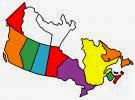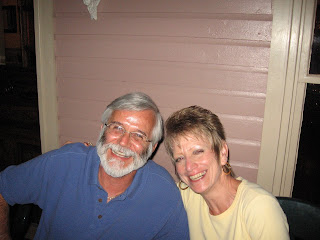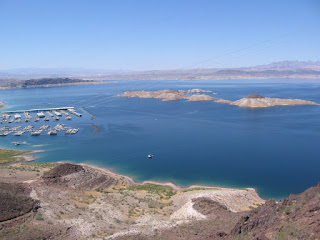 Nevada City, California
Nevada City, California Statue of James Marshall
Statue of James Marshall Replica of Sutter's Mill
Replica of Sutter's Mill This Sourdough had no luck.
This Sourdough had no luck. How would you like to ride these rails to work everyday?
How would you like to ride these rails to work everyday? Empire Mine Workshop
Empire Mine Workshop Mine Office
Mine Office Bourn "Cottage"
Bourn "Cottage" The highest bridge in California. Water was to cover most of the concrete piers.
The highest bridge in California. Water was to cover most of the concrete piers. Cape Horn-- Sorry we did not get a pic with a train on it.
Cape Horn-- Sorry we did not get a pic with a train on it.We have developed a real case of gold fever being here in California. Most of the towns in the area are old mining towns with Grass Valley, Nevada City and Auburn having well preserved "old towns" that now house shops and restaurants. We visited the Marshall Gold Discovery State Historical Park in Coloma, the site where James Marshall first discovered gold at Sutter's Mill in January 1848. This discovery in the South Fork of the American River resulted in the population increasing from 14,000 to 200,000 as the Forty-Niners rushed here in search of wealth. While few found instant riches, their arrival changed California forever. The site has several original buildings, including Marshall's cabin and a replica of the mill that was destroyed in an 1852 flood. Although James Marshall was the first to discover gold he was never able to turn his discovery into personal wealth and died a poor man. I also took advantage of the chance and tried my hand at panning for gold. I think I had a couple of flakes but they were so small they got away. Oh well, I guess we will have to rely on our pensions since we did not strike it rich. It is hard to imagine what those early gold seekers experienced as they stood in and near flowing streams sifting through rocks and sand in hopes of finding nuggets of gold. Many would spend the day searching and, if they were really lucky, maybe find an ounce. For most, as it was with us, it was a very short lived adventure.
Another important gold site is the Empire Mine State Historical Park near Grass Valley. Empire was a hardrock underground mine that operated from 1850 to 1956 and produced 5.8 million ounces of gold. The main shaft reached a depth of 11,007 feet and 367 miles of tunnels were dug undermining the entire town. The ownership of the mine changed hands several times during its operation but from the 1870's until 1929 under the ownership of the William Bourn family it truly flourished and became the "showplace in mining technology." This was due to the Cornish contribution of a unique system of pumps, operated on steam, which emptied the constant water seepage from the depths of the mine. This provided for increased productivity and underground expansion. Their wealth is reflected in the beautiful "cottage" and surrounding grounds. The mine was forced to shut down by the war production board and, although it reopened, it could never regain its previous wealth because its expenses far exceeded the price of gold which the government had set at $35 per ounce. It closed in 1956 and sat idle until 1975 when the state purchased the site, including the owners' cottage and has preserved it as a historical reminder of the areas gold heritage. Many of the mine's shops and offices are just as they were left and you can peer down the shaft into the mine and only imagine the perils these miners faced. These two places demonstrate how gold played such an important role in the growth of California.
Near Auburn we drove across the highest bridge in California. It was originally built to cross a lake that was going to be formed by damming North and Middle Forks of the American River. The dam project was halted for several reasons, one of which was the fear of an earthquake. Because the dam project was abandoned, the bridge is higher above the river than intended thus making it the highest.
Another engineering marvel in the area is the railroad that was built by the Central Pacific in the 1860's as part of the transcontinental track. From the west they had to go over the Sierra Nevada Mountains with many tunnels and high ledges. Near Colfax is Cape Horn, a high promontory where Chinese laborers were lowered over the cliff in bosom baskets to cut a ledge so powder monkeys could get to the spot to dynamite. The ledge is still used today. We have stayed near the transcontinental railroad many times and we have visited Promontory Point, Utah where they met. It is a project that was well documented by Stephan Ambrose in his book Nothing Like it in the World. Cape Horn is just another example of the great human effort involved in bringing the two coasts together.

















































